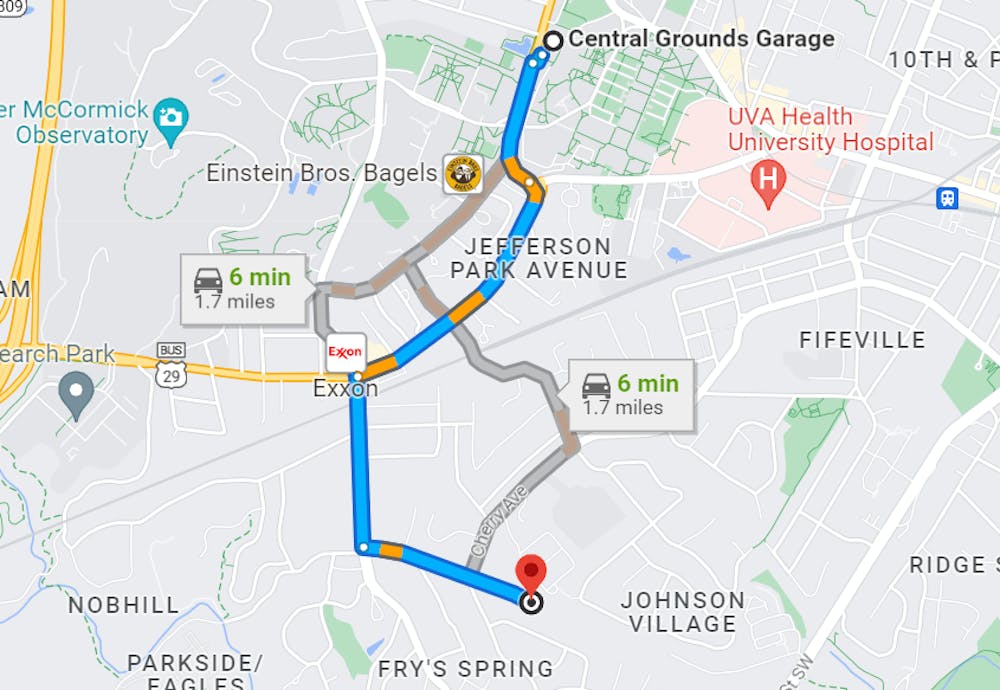Charlottesville has received a disturbing reminder that illegal substances are prevalent in our community. Earlier this month, Charlottesville police completed a drug bust — called Operation Rock Bottom — where they arrested 17 members of a drug cartel. In the bust they found over three pounds of cocaine, a pound of methamphetamine and 850,000 lethal doses of fentanyl — enough to kill all of Charlottesville five times over.
What’s more is this bust took place in the Fry’s Spring neighborhood on Cleveland Avenue, barely a mile away from students living on Jefferson Park Avenue and a mere six minute car ride away from Central Grounds. While the location of drug distribution is not public knowledge, the proximity to Grounds is beyond frightening because students are an easy target — young adults continue to use illicit drugs at extremely high rates. And the bust is no indication that students are now safe — Virginia State Police Superintendent Gary Settle said that 17 arrests is not enough to rid the Charlottesville community of pervasive illegal narcotics. Given our proximity to this problem, the University must take preventive measures to protect its students and prevent overdoses from happening at our school.
This is not the first time I have taken to writing on this issue. Last semester, I demanded that the University make naloxone accessible to students. This call to action is more pertinent now than ever before. Naloxone, a drug that can reverse fentanyl overdoses, is essential given the presence of fentanyl on college campuses. Six out of ten pills laced with fentanyl contain a lethal dose, it can be disguised as other recreational drugs or found in marijuana, it is often put into pills that look like regular prescription opioids — the list of dangers goes on. The point is that fentanyl is increasingly easier to access and harder to detect. When I first wrote the article, it was simply out of precaution. Now, we have very abundant evidence that fentanyl does exist in our community — just a mile away from where we as students live, learn and work. The University must be proactive defenders of student safety, and make naloxone widely accessible to students across Grounds.
While naloxone access is an essential preventative measure to protect students, the severity of the situation requires more intervention. Currently, students are not educated enough on the dangers surrounding the usage of drugs. The Peer Health Educators have highly informative workshops on alcohol and drug safety, but these presentations are not required, giving students little incentive to go. It is problematic of the University to not require these presentations. Each year the University sends out an email about drug policy, and last year, it stated that “it is the responsibility of every member of the University community to know the risks associated with substance use and misuse.” The University can only ensure that every member knows those risks, however, by taking on some responsibility for educating students.
For many students, college is the first time that they are exposed to illicit substances. The University cannot assume that students know the risks of drug abuse or have the skills to stay safe in a climate where drugs are easily accessible. The University mandates education for other life-threatening practices, such as safe drinking practices, and even less urgent issues such as day-to-day interactions with your roommates. With drug busts happening right here in our community, it is not too much to ask that the University to bear some of the burden of educating students about drug use and misuse. While education cannot prevent all drug-related problems, it can warn students of the dangers, provide realistic strategies for staying safe and help to prevent the death and destruction that has become all too commonplace in the communities across this nation that have been devastated by the opioid epidemic.
While it is primarily the responsibility of the University to uphold student safety on Grounds, there are also actions students can and should take to protect their own health, as well as the health of their peers. For example, if naloxone is made available through Mutual Aid’s free store in addition to dorms, students would be able to acquire their own naloxone and carry it in case a peer is overdosing. Students can — and should — also take the initiative to educate themselves on safer drug use. Students should not be alone in this endeavor. There are simple measures we must take to supplement more systemic action from University administrators and ensure safety at our school.
The massive drug cartel bust in the Fry’s Spring neighborhood proves that drugs are permeating our community. There are steps the University can and must take to promote the safety of students on Grounds. The present lack of action places us at an increased risk to the many dangers fentanyl presents. We can choose to prioritize student safety, or run the risk of facing recurring consequences. I think the choice is clear.
Mikayla Havison is an Opinion Columnist who writes about University life for The Cavalier Daily. She can be reached at opinion@cavalierdaily.com.







